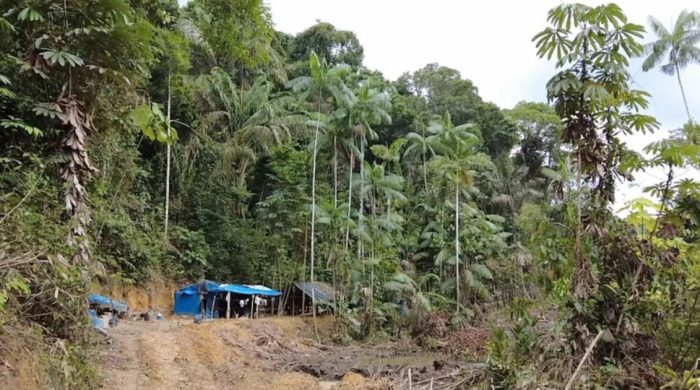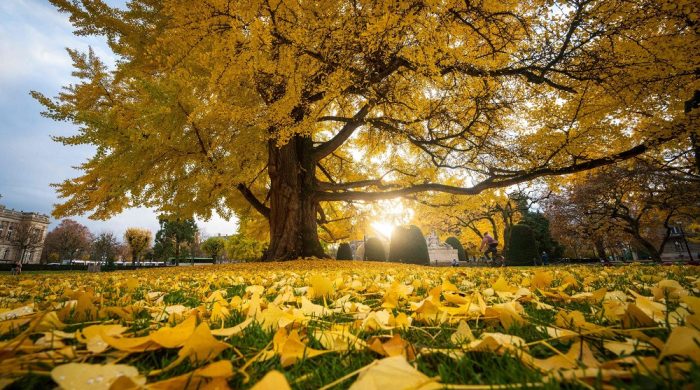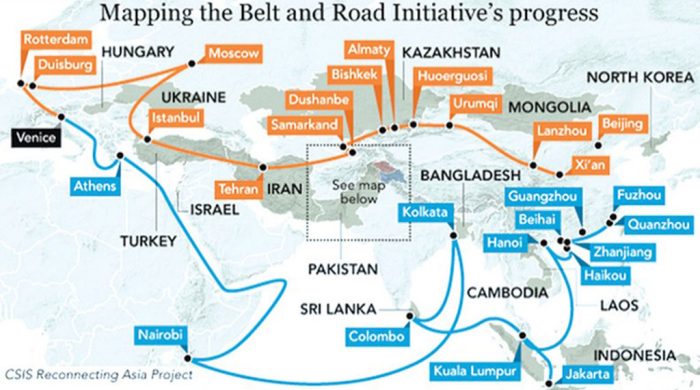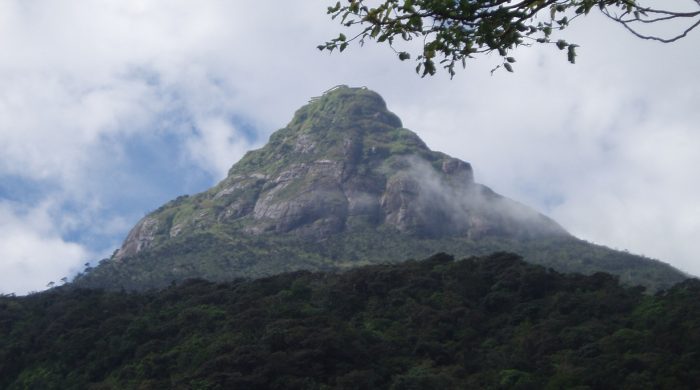How six brothers – and their lions – terrorised a Libyan town

- Update Time : Thursday, January 7, 2021
- 183 Time View

They were the family from hell. For years, until last summer, the Kani brothers held a small Libyan town in their murderous grip, massacring men, women and children to maintain their authority. Now their crimes are slowly being uncovered.
For seven months, workers in white chemical protection suits have been returning to the small agricultural town of Tarhuna, about an hour’s drive south-east of the Libyan capital, Tripoli. They have marked out neat rectangles with red-and-white tape, across the fields of reddish-brown earth, and from these plots they have lifted 120 dead bodies, though large areas still remain untouched.
“Every time I excavate a new dead body, I try to be as gentle as I can,” says one of the workers, Wadah al-Keesh. “We believe that if you break a bone, his soul will feel it.”
Some appear to be the bodies of young fighters killed in battles around Tarhuna last summer, in the ninth year of Libya’s on-off civil war. But many are of civilians – including women, and children as young as five – some bearing signs of torture.
The graves are the gruesome legacy of a reign of terror, lasting nearly eight years, imposed on the town by a local family, the Kanis, and the militia they created.
Three of the original seven Kani brothers are now dead, and the others were made to flee in June 2020 by forces loyal to Libya’s UN-recognised Government of National Accord (GNA), but even now many residents of Tarhuna are afraid to speak out about their crimes. Some say they are still being threatened from afar by the Kanis’ supporters.
Piecing together the story of the brothers – Abdul-Khaliq, Mohammed, Muammar, Abdul-Rahim, Mohsen, Ali and Abdul-Adhim isn’t easy. But what emerges from conversations with those who knew them is a terrifying tale of how a poor family took advantage of the chaos that engulfed Libya after its 2011 revolution against the dictator, Col Muammar Gaddafi – and came to rule their community through sheer ruthlessness.
“Those seven brothers were rough people, without any manners. Their social status was zero,” says Hamza Dila’ab, a trained lawyer and community activist, who remembers meeting them at weddings and funerals before 2011.
“They were like a pack of hyenas when they were together. They swore and quarrelled. They could even hit one another with sticks.”
When the revolution broke out, most people in Tarhuna remained loyal to Gaddafi. The dictator had favoured the town, giving men from its leading families good jobs in his security forces. The Kanis were among the few who backed the revolutionaries – though not out of idealism, says Hamza Dila’ab, but because of a 30-year feud with some cousins, a family of Gaddafi supporters.
In the turmoil after the toppling of Gaddafi, the brothers saw their chance.
“The Kanis slowly, discreetly managed to get that family assassinated, one by one,” says Hamza Dila’ab.
But that set off a cycle of revenge that led to the murder, in 2012, of the second-youngest Kani, Ali.
“Ali was this handsome young Kani brother, and when he died, they turned him into a legend,” says Jalel Harchaoui, a Libya expert at the Clingendael Institute in the Netherlands, who has researched the family’s history.
“The brothers decided to respond to his murder not just by finding the people responsible, and killing them. What they actually did was kill their entire families.”
The Kanis gradually took over and built up some existing military forces in the town, creating their own militia of several thousand fighters. Like most of the militias in Libya, it had access to state funds. And moving on from revenge, the remaining brothers used it to stamp their absolute authority on Tarhuna.
“Their policy was to terrorise people for no other reason than to create fear. They killed for that reason alone. Anyone in Tarhuna who stood against them would die,” says Hamza Dila’ab
Hanan Abu-Kleish was at home on 17 April 2017 when a crowd of the Kanis’ militiamen burst in. “One of them put a gun to my head,” she says. “He asked me who was in the house, and I said, ‘No-one.’ But he dragged me to my father’s room. They said to him: ‘We’re going to kill you first.’ And they really did. I did everything I could to stop it. But they just pumped bullets into his chest.”
Three of Hanan’s brothers were also killed that day, and two of her nephews, aged 14 and 16. Other relatives are missing after apparently being abducted by the Kanis’ forces. Hanan says there was no motive, other than that her family were relatively well-off and respected in Tarhuna.
By then, the Kanis had established their own mini-state in and around Tarhuna, even controlling the uniformed police. They ran a business empire, extorting “taxes” from a cement factory and other local businesses, building a shopping mall, and running some legitimate enterprises, including a laundry. They profited from “protecting” the traffickers of drugs and migrants whose routes crossed their territory on the way from the Sahara to the Mediterranean coast. And at the same time they boasted of fighting trafficking and creating an island of order in war-torn Libya.
At the head of the mini-state was Mohammed al-Kani, a Salafist (a follower of a fundamentalist form of Islam) and the second oldest of the brothers. He was the only member of the family with a little education and a regular paid job – prior to the revolution he’d worked as a driver for an oil company. Frugal and calm, he generally wore a traditional Salafist’s gown.
“It’s usually the case in gangster families that the person at the apex is not particularly frightening or even charismatic,” says Jalel Harchaoui. “At the top, you usually find the person who’s able to understand all the complicated schemes necessary to make the whole pyramid work. And that was the case with Mohammed.”
Below him, shaven-headed Abdul-Rahim was in charge of “internal security” – dealing with any suspected traitor, while gaunt-faced Mohsen was the “minister of defence”, in charge of the Kanis’ militia. “Abdul-Rahim was the number one killer; after him: Mohsen,” Hamza Dila’ab remembers. He says he, and many others who fled Tarhuna, informed successive governments in Tripoli about the murders, “but unfortunately those governments just ignored all the Kanis’ crimes, because the Kanis’ militia was useful to them”.
In 2017, the brothers staged a military parade including heavy weaponry, ranks of uniformed police – and lions. These were the brothers’ personal property and it’s rumoured they were fed the flesh of some of the family’s victims.
Then, in 2019, the Kanis decisively changed sides in the civil war. Abandoning their alliance with the GNA, which controlled western Libya, they invited its greatest enemy, Gen Khalifa Haftar, master of the eastern half of the country, to use their town as his launchpad to attack the capital.
Suddenly, tiny Tarhuna became the cockpit of an international struggle. Haftar was backed by a strange alliance of France, Egypt, the United Arab Emirates – and Russia, which sent mercenaries to camp in the Kanis’ town. Against them, Turkey poured in weapons to support the Tripoli government. And it was probably a Turkish drone that killed Mohsen al-Kani and the youngest brother, Abdul-Adhim, aged 22, in September 2019.
Their deaths, and the failure to take Tripoli sparked the bloodiest period Tarhuna has known. “The murders had to be carried out on a more frequent basis because things were not working out,” says Jalel Harchaoui. “How do you make sure your population doesn’t conspire with the enemy? So the Kani family had to become more and more paranoid.”
But there were also killings that were apparently motivated by the Kanis’ need for equipment to continue the war.
One day in December 2019, Tarhuna housewife Rabia Jaballah saw her cousin Tareq shot dead on his doorstep by the Kanis’ militiamen. They took away his 4×4 pickup. The next day, as he was being buried, police invaded the cemetery, snatching 10 men from the family, including her husband. They had Tareq’s truck – now with a grenade launcher mounted on it. Suddenly she understood the reason for the attack: “The Jaballah family, we make our living from a car business, mainly 4x4s. So they attacked us to rob us, to use our vehicles for their war.”
Pro-government fighters finally captured Tarhuna in early June 2020, and the remaining four Kani brothers and their militia fled with Haftar’s forces to eastern Libya.
“We had so much hope, we didn’t sleep that night, the children were happy,” Rabia Jaballah says.
The next morning, she and many others whose husbands, brothers or sons had been kidnapped, rushed to the Kanis’ notorious detention centres in search of them. In one prison, to their horror, they found a row of cells 70cm by 70cm – barely big enough to sit in. There were discarded clothes, but the prison was empty.
“It completely destroyed our hope,” Rabia says. “The walls were covered in blood. I couldn’t handle it any more. I had a complete breakdown.”
Daniel Hilton of Middle East Eye, one of the very few foreign reporters to have visited Tarhuna since the defeat of the Kanis, made other disturbing discoveries. “Above the cells were mounds of ash from fires that the people keeping these prisoners would light to turn the cells into ovens, as a form of torture,” he says. On the floor of another prison he found small shoes in bright colours, belonging to children now believed to be dead or missing.
Kamal Abubakr, head of the GNA government’s Authority for Searching and Identification of Missing Persons, says more than 350 people from Tarhuna are registered as missing – though some locals say the real number is closer to 1,000.
So far, very few of the bodies found in mass graves have been identified, as DNA-matching work is only just beginning. But Dr Abubakr says the burials discovered so far are more shocking than any others found in Libya since the beginning of the conflict in 2011.
“This is the first time we’ve found women in mass graves, or children. Also we found a body buried with medical equipment, an oxygen mask and intravenous tubes… a live man taken from the hospital and buried. This is a shock to us as well.”
The government in Tripoli says it is investigating responsibility for the killings, though Hanan Salah, senior Libya researcher for Human Rights Watch – which is publishing its own report on Tarhuna on Thursday – says it has announced many investigations since its formation in 2015 and she has yet to see a single one that has been completed.
“The authorities should act on the grim discovery of mass graves by taking proper steps to identify the bodies and bringing those responsible for abuses to justice,” she says.
Echoing Hamza Dila’ab, Hanan Salah suggests that the GNA, which was allied with the Kanis for several years, “possibly turned a blind eye to some of these very serious allegations, which means that the senior leadership of the GNA, not just the military officers, but also the officials, can be responsible for very serious violations.”
Persistent requests by the BBC for an interview with a government official who would respond to this accusation were unsuccessful.
Meanwhile, the International Criminal Court has opened an inquiry into the Tarhuna killings, and Mohammed al-Kani has been placed on a US Government sanctions list. But, under general Haftar’s protection, he and his remaining brothers are unlikely to face justice any time soon.
In Tarhuna itself, there are calls for revenge, and Wadah al-Keesh, the young grave excavator, is fearful for the future. “The people of Tarhuna have just been released from one militia to another – the government is just the face, the militias control the ground,” he says. “And they just do their thing, which is terrifying people.”
But at the reburial of one man found in a mass grave, Said Mesbah al-Shoshi, Wadah heard a speech by the victim’s brother that seemed to him like a small glimmer of light in a tragic town.
“He said: ‘My brother did not give himself to any kind of cause. My brother’s cause was just to live and live for his children. We have nothing to do with this war. So if anyone claims people died for a cause, throw them out, because they just want to use the death of others for their benefit. We want to stop the circle of revenge, because it’s a disaster for this country.’
“And when I heard that, I was about to cry, actually. It was wonderful in a way.”
For years Abood Hamam chronicled the war in Syria for news outlets all over the world without ever revealing his name – and despite being employed by different warring parties. He began as photographer to the presidential couple – Bashar and Asma al-Assad. Later he filmed Islamic State’s victory parade. Now, finally, he’s broken cover, to encourage exiles to return to his beloved hometown, Raqqa.





















